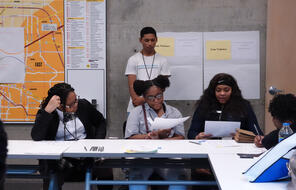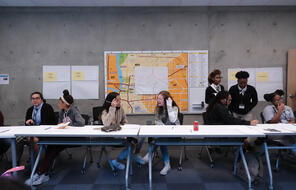Step 7: Refining the Thesis and Finalizing Evidence Logs
At a Glance
Language
English — USSubject
- History
- Social Studies
Grade
9–12Duration
One 50-min class period- The Holocaust
- Antisemitism
- Genocide
- Democracy & Civic Engagement
Overview
About This Assessment
At the end of this course, students will need time to complete their evidence logs and develop and refine their approaches to either the essay or the Choosing to Participate (CTP) Toolbox project. Students writing the essay assessment will need to refine their thesis statements, organize their evidence into an outline, and draft, revise, and edit their essays. Students designing a CTP project will need to determine the kind of toolbox that they feel best addresses the lessons they learned throughout the course and how they want to personally participate in creating the kind of community and world they seek. They will need to design their toolbox prototype, organize their evidence to support the “why” behind the tools chosen for their project, and refine the presentation of their work.
The suggested activities that are presented below will help your students think about the course as a whole as they answer the final assessment prompt, as well as start to prepare them to either write a strong thesis statement for their essay or plan a meaningful CTP project.
For ideas and resources for teaching the remaining steps of the writing process from outlining to publishing, we encourage you to consult the Argumentative Writing Prompts and Strategies supplement and the online Teaching Strategies collection for activities and graphic organizers to support your teaching.
Procedure
Activities
Materials and Downloads
Quick Downloads
Download the Files
Download allGet Files Via Google
Step 7: Refining the Thesis and Finalizing Evidence Logs
Choosing to Participate
Glossary of Terms | Holocaust and Human Behavior High School Elective Course
Unlimited Access to Learning. More Added Every Month.
Facing History & Ourselves is designed for educators who want to help students explore identity, think critically, grow emotionally, act ethically, and participate in civic life. It’s hard work, so we’ve developed some go-to professional learning opportunities to help you along the way.
Exploring ELA Text Selection with Julia Torres
On-Demand

Working for Justice, Equity and Civic Agency in Our Schools: A Conversation with Clint Smith
On-Demand

Centering Student Voices to Build Community and Agency
On-Demand





